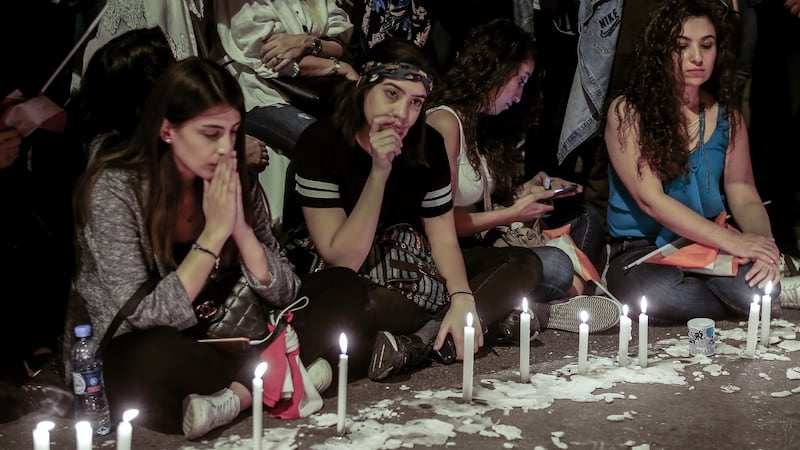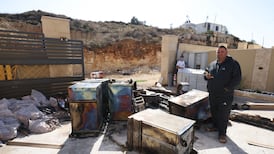Almost one month since the start of their uprising, Lebanese have poured scorn on social media, blocked a major highway and mounted a protest at the home of a veteran Sunni politician nominated to head a new government.
Mohamed Safadi was chosen by caretaker prime minister Saad Hariri in consultation with President Michel Aoun and representatives of the Shia Amal and Hizbullah movements.
Protesters complain of failure to rebuild infrastructure following the 1975-1990 civil war, ongoing shortages of electricity and water, high unemployment and a collapsing economy. They say Safadi, a 75-year-old billionaire, is too old. They also complain that he served in the corrupt ministries of public works, energy and water, trade and finance, and was embroiled in domestic graft and an international scandal over the Saudi purchase of British warplanes.
On a popular website, a commentator called “Lebanfirst” said Hariri, who resigned as prime minister at the end of last month, did not “need to agree to such a choice, especially as he could have counted on the Lebanese to back him up. This is a no-go choice.”
Lebanfirst spoke for many when he asked, “How stupid do they believe us to be?”

Hariri had offered to lead a cabinet comprising technocrats to meet the demands of hundreds of thousands of Lebanese staging anti-government demonstrations, which have paralysed the country. Aoun and his Shia allies have stalled cabinet-formation by insisting on the appointment of politicians the majority of Lebanese seek to oust and prosecute for mismanagement and corruption.
The unexpected uprising erupted on the night of October 17th shortly after President Michael D Higgins, on an official visit to Lebanon, paid visits to the country's now embattled president, parliamentary speaker and prime minister.
Phone app tax
The trigger for the uprising was a tax on free internet phone apps. This came on top of multiple taxes imposed in an austerity drive designed to convince foreign donors to release $11 billion (€9.5 billion) in grants and soft loans.
Daily protests have changed the sociopolitical life of Lebanon. Hundreds of thousands have proclaimed themselves Lebanese rather than identifying primarily as Christians, Shias, Sunnis and Druze. Men, women and children from all classes and communities have poured on to the streets of Lebanon’s cities, towns and villages, demanding essential services, jobs and the downfall of politicians who enrich themselves at the expense of the state.
The protesters quickly became democratic revolutionaries by calling for an end to the sectarian system of governance that has plagued Lebanon since independence in 1943.
Pricey cafes and outrageously expensive shops in the sterile centre of Beirut – partially rebuilt after the civil war by slain ex-premier Rafiq Hariri, father of Saad – are shunned during the vibrant street festivities mounted by cheerful Lebanese celebrating their revolution.
The northern port city of Tripoli, where unemployment is 57 per cent, has shed conservatism by holding daily and nightly protests involving men and women who dance in the streets. Shia Hizbullah and Amal supporters have defied the movements’ leaders by taking part in demonstrations.
The revolution has closed schools, banks, government offices, and businesses, petrol is rationed, supplies of imported foods are dwindling and the value of the currency is falling. Pressure is building on the politicians to settle with the revolutionaries, who vow to carry on.
Four people have been killed since the protests began. Alaa Abu Fakher, a Druze Progressive Socialist Party member, was shot last week by a soldier at a roadblock south of Beirut. Hussein al-Atta was killed when protesters blocked the airport road and two Syrian workers died when the building they were sheltering in was torched by hard core protesters.












